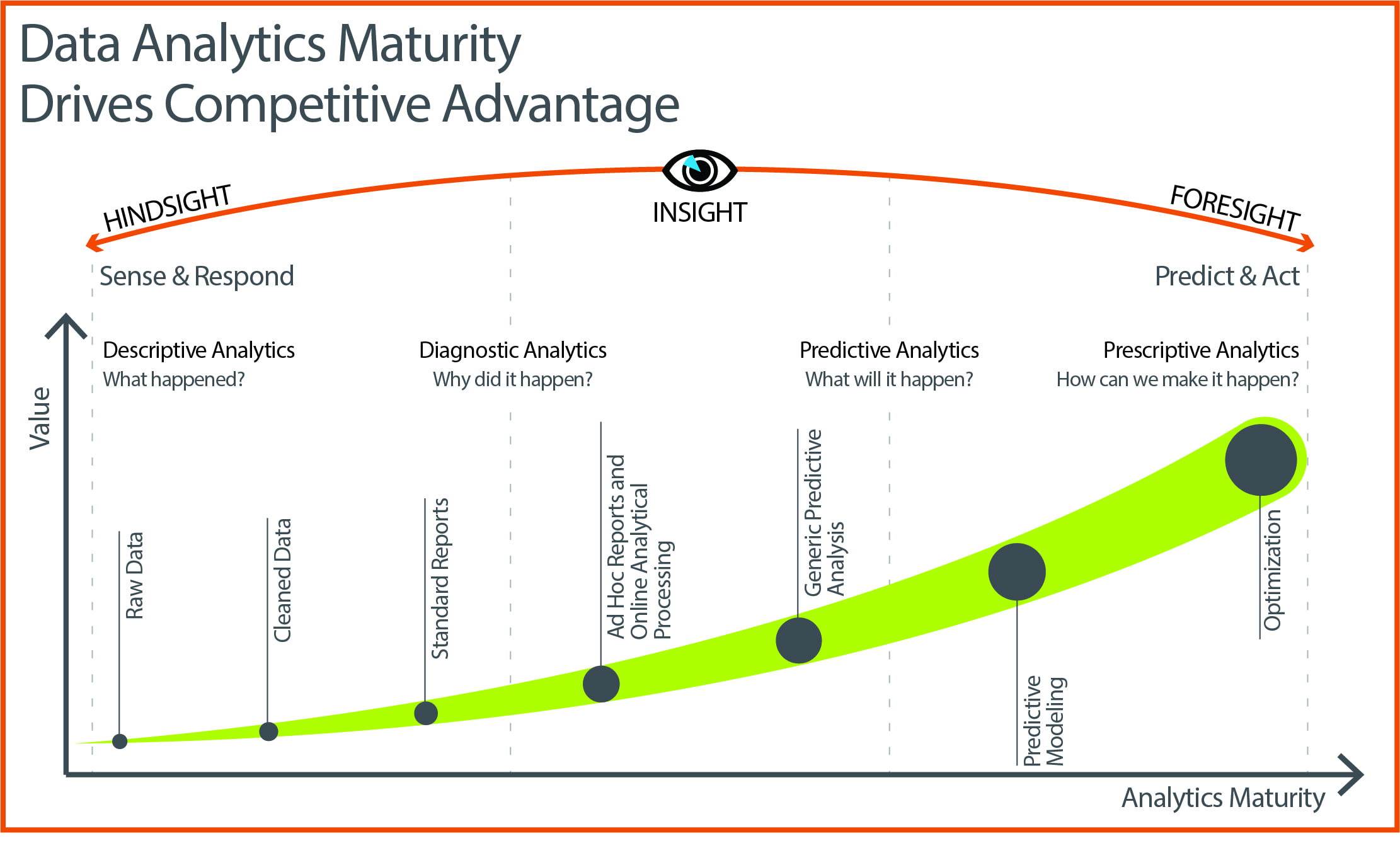Embedding data analytics and data management plans into business functions and processes can help organizations gain deeper insights, capture more opportunities, outperform peers and move through the digital transformation journey.
As one can expect, data and digital consciousness among organizations worldwide is expanding. With the fast-moving pace of today’s market, industries are consuming large amounts of data to respond to end-user needs and demands – be it the need for improved operational efficiency and reduced environmental and asset management costs or the need for compliance certainty and reduction in operational and reputational risks.
Many industries are recognizing the value that a mature data analytics practice can provide, including the ability to:
- Identify areas of risk and opportunity within the business;
- Progress to proactive data-driven decision-making;
- Improve productivity and performance;
- Reduce cost and risk while improving efficiency;
- Drive delivery of on-time, on-cost projects;
- Prioritize funding and resource allocation; and
- Empower decision-making with real-time data to meet organizational demands.
Despite this, most organizations have not come close to realizing the full potential of data and analytics and struggle with understanding the full scope of benefits a digital mindset and culture can bring.
The journey to becoming a mature data-driven organization moves from mere data collection to applying advanced analytics to predicting trends for the most efficient decision-making possible. We see this movement advance through four phases:
-
Descriptive Analytics: What happened?
Reactive approach to accessing and collecting historical data; data standards or governance protocols are likely not in place.
-
Diagnostic Analytics: Why did it happen?
Data reporting and the use of technology is implemented and standardized to set benchmarks to start to understand why something happened.
-
Predictive Analytics: What will happen?
Technology and new digital capabilities are integrated and leveraged to manage and examine data to predict how trends will continue.
-
Prescriptive Analytics: How can we make it happen?
Advanced data analytics management and processes to accurately prescribe the best way forward.

Companies that have not yet built data analytics and a strong data-management function into their strategy are finding that they need to catch up fast. Organizations that don’t extract the most value from data are at risk of being outpaced by peers or have an inability to secure already-scarce resources.
Environmental Health & Safety Loss Prevention Analytics Case Study
Operating with a benefits-driven philosophy while guiding EHS investment decisions
As part of the EHS advisory, asbestos and mold remediation services we provide to a leading company in the healthcare industry, Arcadis observed an opportunity to review their current EHS losses (workmen’s compensation, general liability, professional liability and automobile liability insurance claims) to unlock loss prevention opportunities. This organization had no immediate visibility to areas of functional and locational EHS losses and inherent risk, primarily due to challenges gaining access to claims and audit data for their vast global portfolio.
With the help of data visualization provided by the intuitive business intelligence dashboard we developed using the organization’s own technology solution suite, the organization could rapidly see where they had non-financial (compliance and risk) issues.
This approach of using data analytics to showcase problem areas of EHS loss, risk and compliance became a real game changer in terms of also defining financial opportunity and information-driven performance. We are working to influence direct financial reduction in Insurable Claims with this organization now, through a process-based approach to EHS performance management—to drive up their ROI in EHS investment.
Now is the time to develop a data analytics program
Becoming a data-driven organization can be perceived as an overwhelming project. Approach the journey by resetting strategy and goals at each of the four phases, planning at each level to move to the next, from data acquisition and management evolving to performance analytics and, ultimately, strategic insights.
See how you can bring data to life within your organization.




